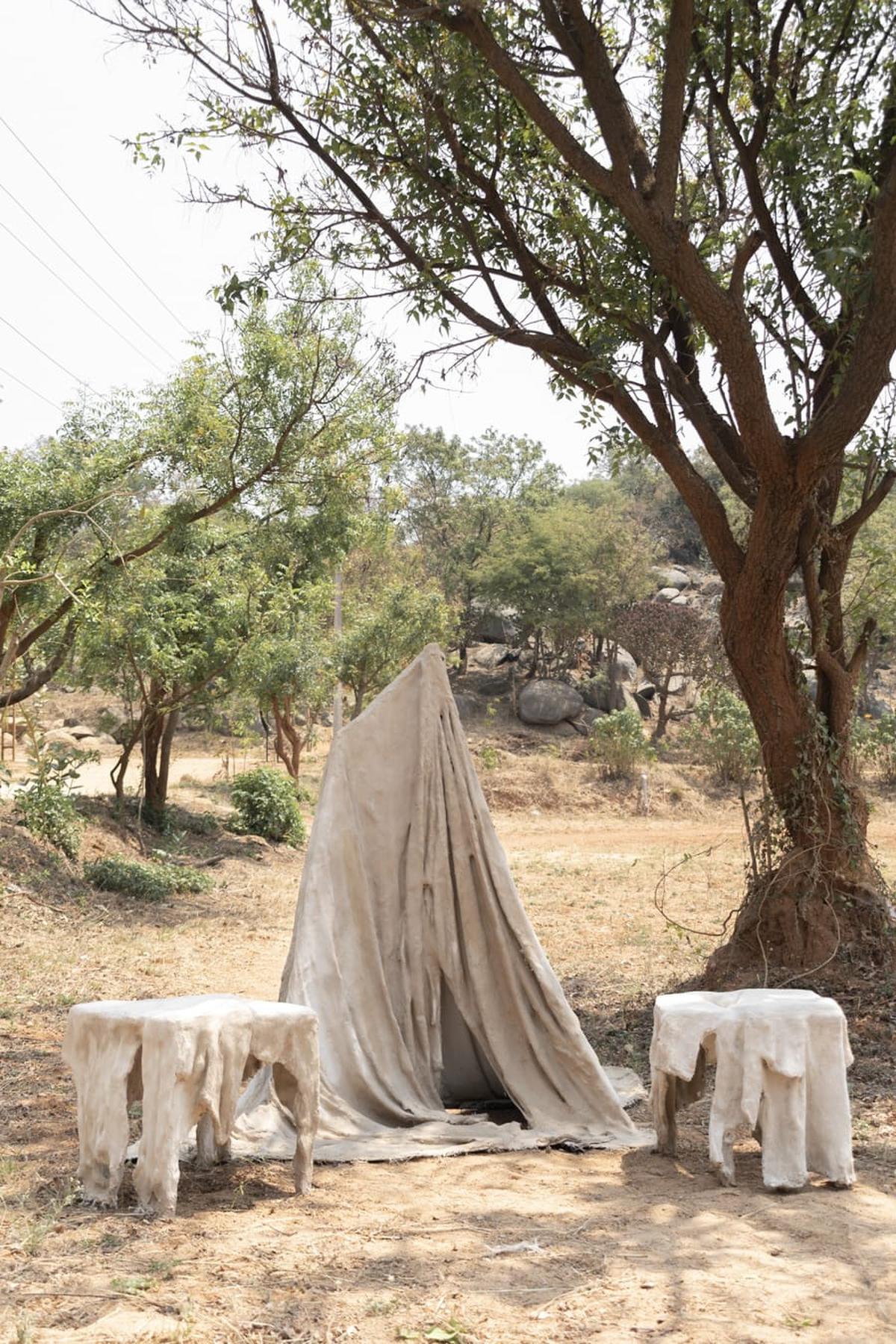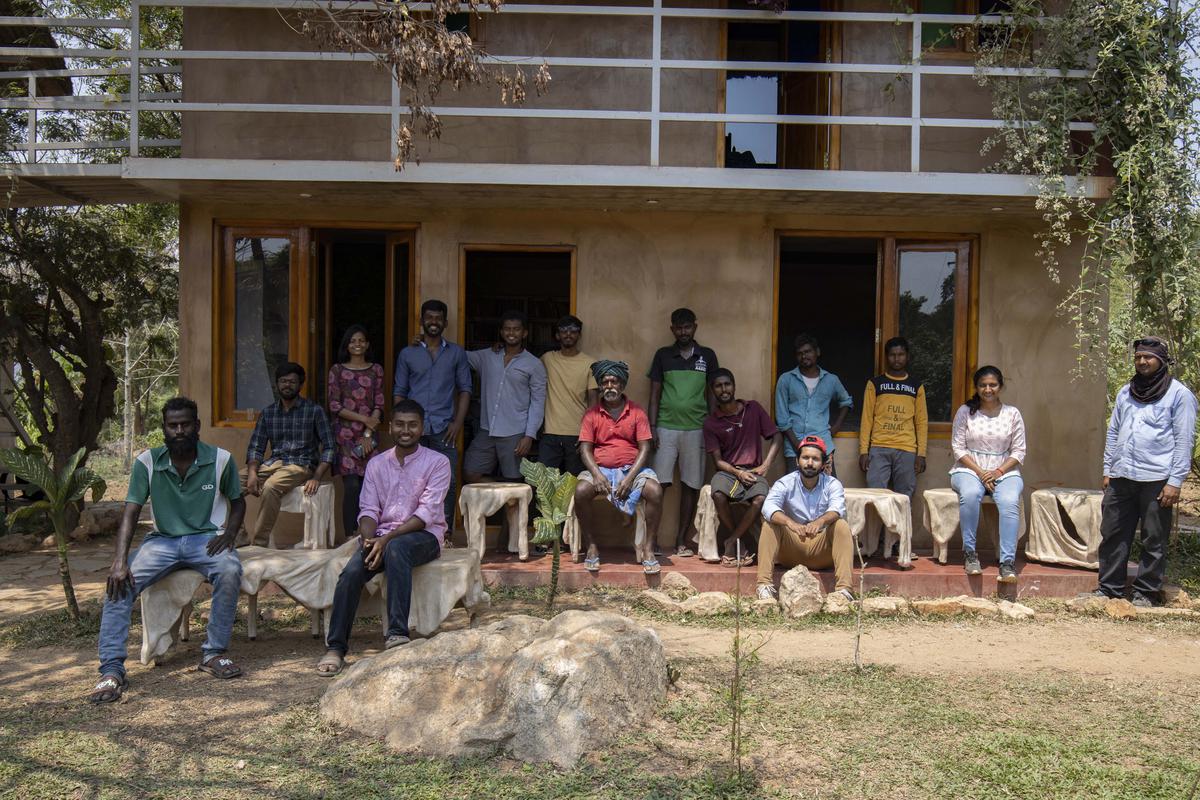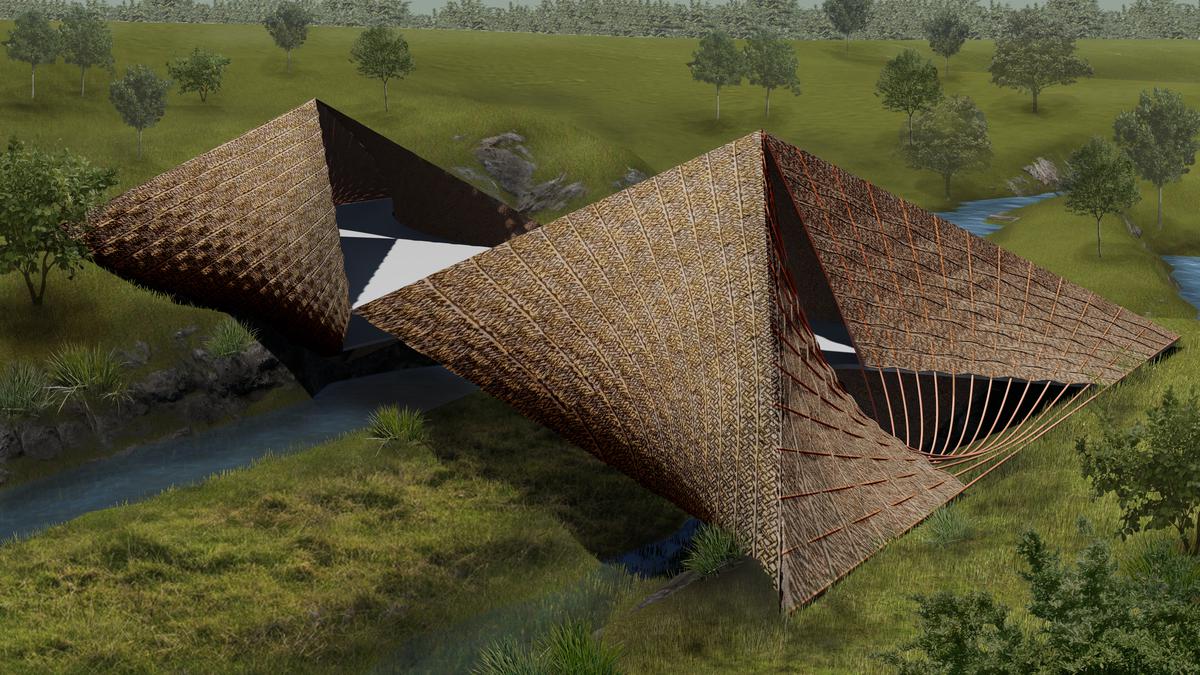The avant-garde architect’s creations in ‘clothcrete’ will be part of an exhibition on climate change in London
The avant-garde architect’s creations in ‘clothcrete’ will be part of an exhibition on climate change in London
Sweeping curves defy gravity; brickworks play peek-a-boo; spiralling staircases float in the air and twisting walls unfurl like sails while sunlight streaming in creates art on the floors and walls.
Sustainability marries style in Kerala-based architect Vinu Daniel’s buildings made of mud, bamboo, scrap, tyres, casuarina trees and local material.
In May, Vinu’s creations in ‘clothcrete’ (a term created by him to describe cloth used for sculpting) will be showcased at the Barbican Centre in London as part of a global exhibition on climate change titled Our Time on Earth.
In a zoom interview, Vinu points out that the theme is relevant to the world we inhabit today, especially in Kerala. He believes that the floods that devastated the State in 2018 and 2019, and, to some extent, in 2021, are a clear indication of climate change and global warming. Among thousands of people affected by the flood were weavers in Chendamangalam. Says Vinu: “Approximately 300 weavers lost their means of earning a living and lost stock worth ₹45 lakh, yarn and their looms. I chose those damaged textiles for this exhibition on climate change.”
Architect Vinu Daniel’s creations in ‘Clothcrete’, will be showcased at Barbican Centre in London as part of of a global exhibition on climate change, ‘Our Time on Earth
| Photo Credit: SPECIAL ARRANGEMENT
With the help of a slideshow, Vinu explains the process of making the clothcrete. The damaged clothes sourced from weavers were dipped in lime and soil and draped to form chairs, stools and screens. “We arrange the drapes artistically for an aesthetic effect and those are reinforced with glass fibre and plastered with soil and lime,” explains Vinu.
The dried pieces are polished with coconut husk, and the material acquires a sheen, akin to those seen in “the drapes of Leonardo Vinci’s Pieta or Bernini’s masterpieces,” asserts Vinu.
He had tried the experimental work in the now-closed Tease Me Café in Kottayam. The cafe had a background and seating made of clothcrete. It was draped and folded to create a dramatic background that resembled drapes fluttering in the wind.

Architect Vinu Daniel’s creations in ‘Clothcrete’, which will be showcased at the the Barbican Centre, London from My to August 2022
| Photo Credit: SPECIAL ARRANGEMENT
“With the same technique, the damaged cloth was used to sculpt my creations. It is to remind people of the destruction wrought by climate change on the lives of people,” says Vinu.
His architectural firm Wallmakers, founded in 2007, has been working with Save The Looms, to provide a solution to the floods that have devastated the weavers’ lives.
He hopes to use the damaged yarn to build workspaces for weavers, and locate the looms on the first floor of the structure. “The walls of the building will be made of reclaimed yarn bound with steel cables that will eventually support traditional Kerala-style sloping roofs,” elaborates Vinu.
Vinu has “designed an immersive space in which to present Stories of Change, which explores action, looking at grassroots organisations and change-makers around the world to find out what is happening on the ground,” states a release from the Barbican.
The pavilion will also have 10 screens that showcase a series of “video stories of those working at the grassroots to bring about a change in the way we interact with the environment to combat change and hold to account those responsible for polluting the earth”. After London, the exhibition on Our Time on Earth will travel across the world for three to five years.

Architect Vinu Daniel’s creations in ‘Clothcrete’, which will be showcased at the the Barbican Central, London. All The work for the exhibition was done by a team of architects and masons at Shoolagiri, near Hosur in Tamil Nadu
| Photo Credit: SPECIAL ARRANGEMENT
All the work for the exhibition was done at Shoolagiri, near Hosur in Tamil Nadu, about two hours from Bengaluru. “We are building a community space for Baiju CK and there is a team of architects and masons there. In addition, two to three architects from Bengaluru join us in our work. They believe in my philosophy of sustainable architecture,” says this disciple of the legendary Laurie Baker.
Baker, a Gandhian, had asserted that buildings must be constructed with material available within a “five-mile radius.” “Now, what’s easily available everywhere is garbage and junk. So I insist on recycling that in aesthetic and functional ways in my buildings,” says Vinu

Architect Vinu Daniel
| Photo Credit: Special Arrangement
Working with a group of like-minded young architects, Vinu says he hopes to mentor them in his philosophy of using local materials to build structures that do not damage the ecology. “Camouflage architecture, wherein buildings do not distort or destroy the landscape of a place, is the way forward to protect the ecology. Architecture must obey the ecology of the land; on a hill, the building must be in a symbiotic alignment with the landscape and ecosystem. I am following that principle for all my work in Hosur,” he says.

A bridge in Karjat, Maharashtra, designed by architect Vinu Daniel
| Photo Credit: Special arrangement
Even without a permanent address or a roof over his head, Vinu, who calls himself a ”vagabond architect” has been changing and challenging the building blocks and aesthetics of architecture. His calling card is his signature style of building that he uses to construct houses, museums, community spaces, cafes and places of worship.
“Now, I am working with tyres. Since retreading has become passe, more than three lakh tyres are discarded every day. They make ideal building blocks,” explains Vinu.
Vinu is recyling tyres to build a musuem dedicated to the late SP Balasubramaniam (SPB) in Chennai.
“Give me junk, I can go on building,” he says.
‘
























